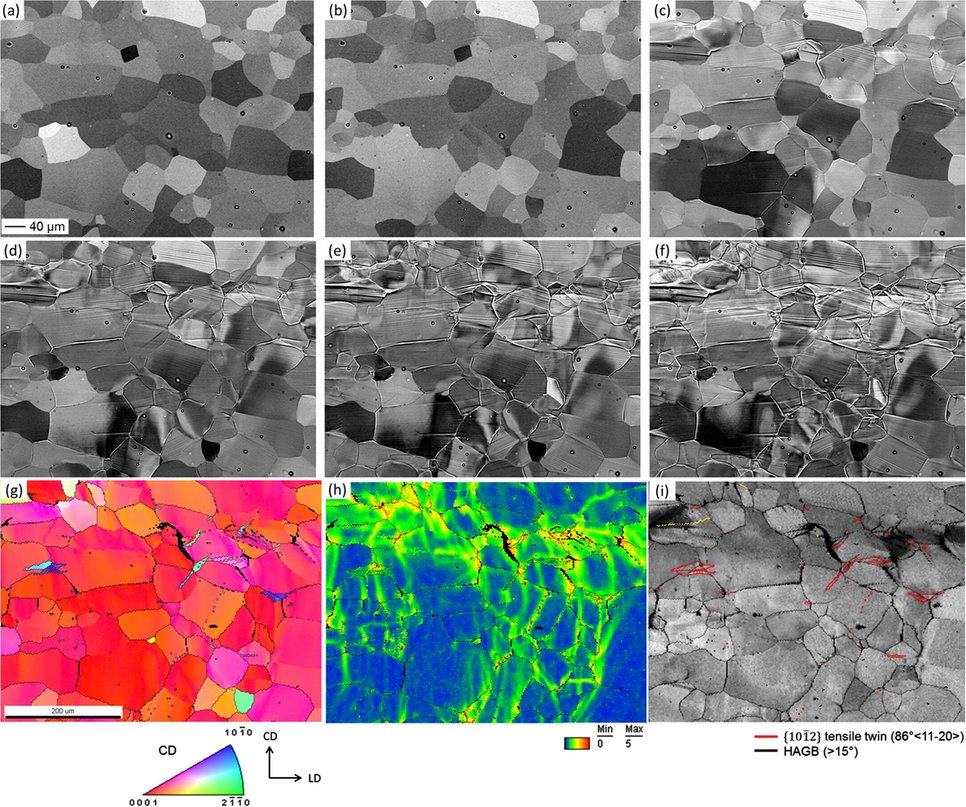Collective grain-scale mechanics in Mg and Mg–rare earth alloys
In this project group we investigate the microstructure evolution of pure Mg and two Mg–rare-earth alloys (Mg–3 wt.% Dy and Mg–3 wt.% Er) during in situ compression tests by electron backscatter diffraction and electron channelling contrast imaging.

Electron Chaneling Contrast images of the microstructure development of pure Mg during compression. (a) Microstructure at the initial state without deformation, (b–f) microstructure after the first to the fifth compression step; (g) IPF map, (h) KAM map, (i) IQ map with highlighted grain and twin boundaries of pure Mg after the fifth compression step. Each compression step corresponds to about 1% engineering strain.
Strain localization and the formation of an early stage shear band (“pre-shear band”) are observed in pure Mg during compressive deformation below 5% engineering strain. In the experiments percolative grain clusters with prevalent basal slip as a precursor for shear band formation is frequently observed. This collective grain-cluster shear behaviour is analysed in more detail using crystal plasticity simulations, revealing a percolation of intense basal slip activity across grain boundaries as the mechanism for shear band initiation. Plane trace analysis, Schmid factor calculation and deformation transfer analysis at the grain boundaries are also performed for the activated twins. It appears that many activated tension twins exhibit pronounced non-Schmid behaviour. Twinning appears to be a process of accommodating local strain rather than a response to macroscopic strain.
